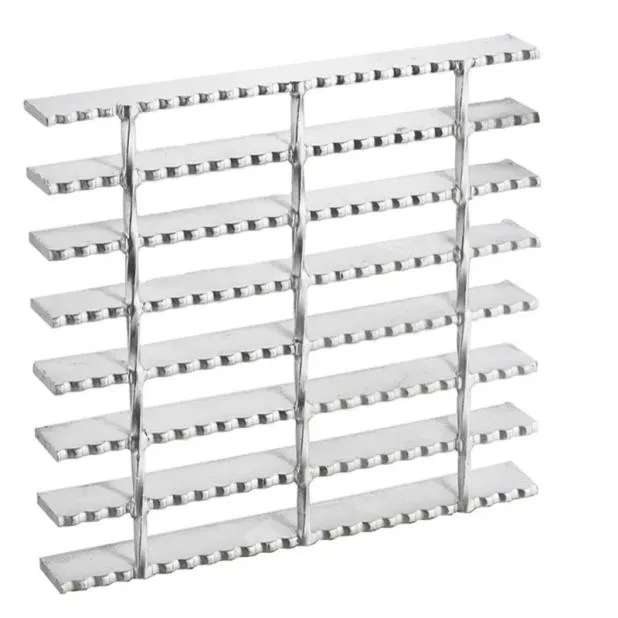- Industrial zone, South of Anping Town, Hengshui, Hebei, China.
- sales@hfpetromesh.com
- +86-18931809706
structural grating
Understanding Structural Grating Applications and Innovations
Structural grating is a pivotal element in contemporary engineering and architectural design, playing a crucial role in providing safety, functionality, and aesthetic appeal. Grating systems, which consist of a series of parallel bars or slats, create a framework that offers support while allowing for light, air, and water penetration. The versatility of structural grating has led to its widespread use in various industries, including construction, manufacturing, and even art installations.
What is Structural Grating?
At its core, structural grating is a material composed of interconnected bars typically made from steel, aluminum, or fiberglass. These materials are selected based on their strength, weight, and resistance to environmental factors such as corrosion and wear. Grating is available in different styles, including pressure-locked, welded, and swaged, each offering distinct advantages depending on the application.
One of the key attributes of structural grating is its ability to provide safe and stable walking surfaces. Grating systems can bear heavy loads while maintaining excellent drainage and preventing slips. Consequently, they are often implemented in walkways, platforms, and staircases, especially in industrial settings where safety is paramount.
Applications in Various Industries
The industrial sector heavily relies on structural grating for various applications
. In petrochemical plants, for instance, grating is utilized in the construction of access platforms, allowing workers to navigate machinery safely. The open design permits quick draining of spills or rainwater, thus enhancing workplace safety.In the construction industry, structural grating serves not only a functional purpose but also an aesthetic one. Architects are increasingly incorporating grating into building designs, both inside and outside structures, to provide visual interest. For example, grating can be used in facades, allowing natural light to filter through while maintaining privacy.
Moreover, grating systems are indispensable in wastewater treatment facilities and chemical plants, where they form part of the infrastructure necessary for filtration processes. Their ability to withstand harsh chemicals and extreme environmental conditions makes them ideal for such applications.
structural grating

Innovations in Structural Grating
As technology progresses, so too does the design and manufacture of structural grating. Advancements in materials science have led to the development of high-performance composite gratings that are lightweight yet incredibly strong. Fiberglass reinforced plastics (FRP) have emerged as a trendy alternative to traditional metal grating, offering corrosion resistance and half the weight. This innovation not only enhances safety during installation but also reduces long-term maintenance costs.
Furthermore, advancements in manufacturing technology, such as computer-aided design (CAD) and automated cutting, have improved the precision and customization of grating systems. Companies can now create tailored solutions to fit specific requirements, allowing for greater flexibility in design and faster installation times.
Considerations for Choosing Structural Grating
When selecting structural grating for a project, several factors must be taken into account. Load-bearing capacity is crucial; it’s essential to assess the weight the grating will need to support. Additionally, the environment in which the grating will be used—whether it’s indoors, outdoors, exposed to chemicals, or in a high-slip condition—can dictate the type of material and design required.
Surface finish is another consideration, as some applications may call for a non-slip surface to enhance safety. For example, grating for outdoor use in wet conditions may require a more aggressive texture to prevent slips and falls.
Conclusion
Structural grating is an integral aspect of modern infrastructure, offering a blend of safety, functionality, and aesthetic value. Its adaptability across various industries and innovative material advancements ensure that it will remain a critical component in engineering and architecture. As we continue to seek sustainable and efficient solutions in construction and design, the role of structural grating will undoubtedly evolve, leading to new applications and greater efficiencies in the future. Whether it’s facilitating safe work environments or contributing to the beauty of urban landscapes, structural grating stands as a testament to human ingenuity and the ongoing pursuit of innovation.
-
The Power of Pyramid Shaker Screen - A 3-Dimensional SolutionNewsOct.24,2024
-
Exploring the Versatility and Durability of Steel GratingNewsOct.24,2024
-
Revolutionizing Drilling Efficiency with Steel Frame Shaker Screens for Mud Shale ShakersNewsOct.24,2024
-
Potential of Shale Shaker ScreensNewsOct.24,2024
-
Offshore Pipeline Counterweight Welded Mesh - Reinforced Mesh in Marine EngineeringNewsOct.24,2024
-
Revolutionizing Offshore Pipeline Stability with Concrete Weight Coating MeshNewsOct.24,2024
